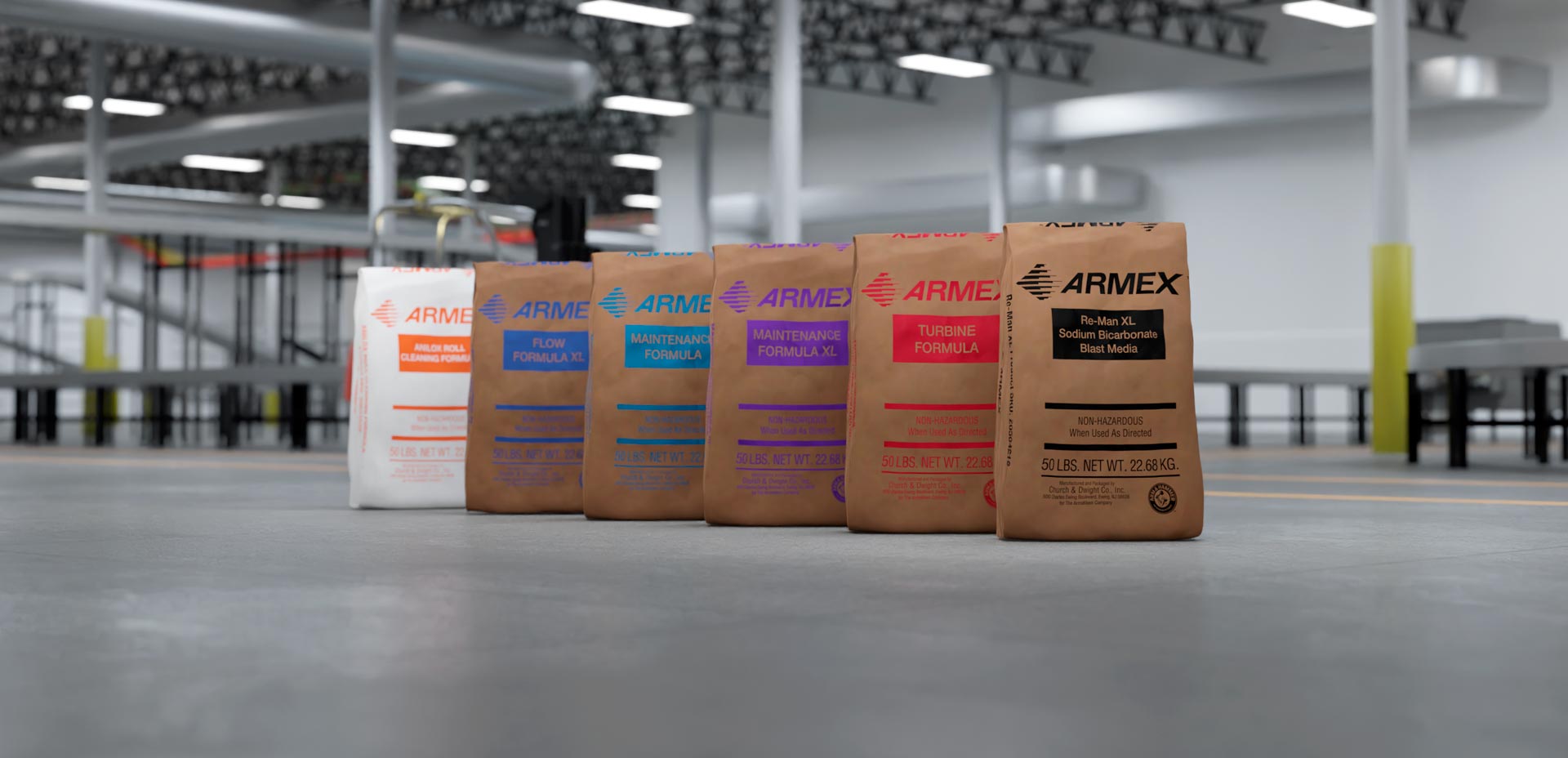Non-Destructive Cleaning
ARMEX™ is a brand of the Church & Dwight Co., Inc. makers of ARM & HAMMER™ products since 1846. Sodium Bicarbonate (baking soda) abrasive blasting originated in 1984 during the restoration project of the Statue of Liberty with the assistance of Church & Dwight. Project engineers were searching for a replacement for sand blasting. Baking soda was the answer, with its extraordinary cleaning and coating removal properties all while not causing any damage to Lady Liberty’s delicate copper skin. At the completion of the project over 200,000 pounds of ARM & HAMMER™ baking soda was used to abrasive blast Lady Liberty. Following this success, Church & Dwight launched the ARMEX™ brand the first Sodium Bicarbonate blasting abrasive in 1989.
ARMEX task specific formulations can be used for both dry and wet blasting in contained cabinets or portable blast pots.

